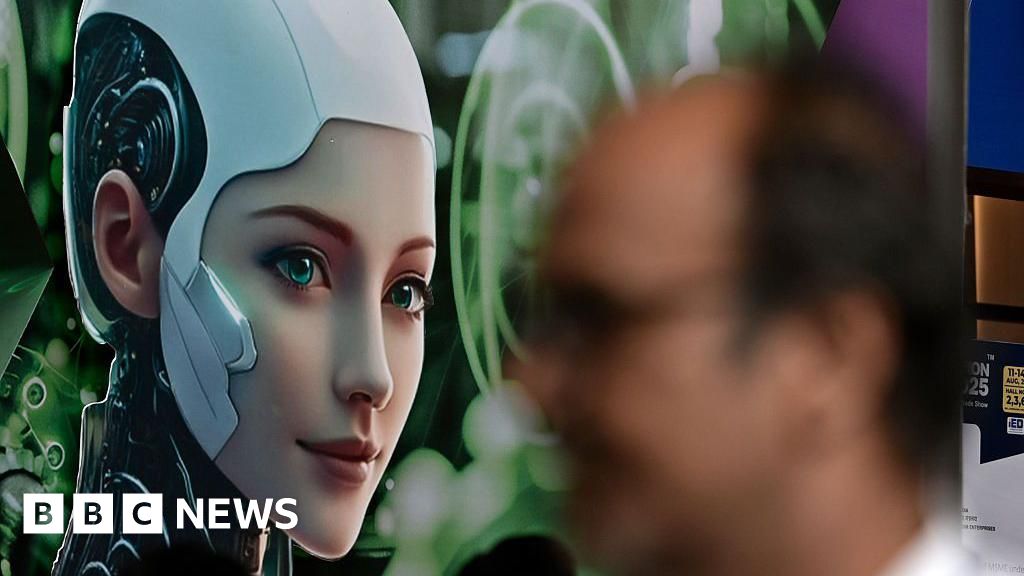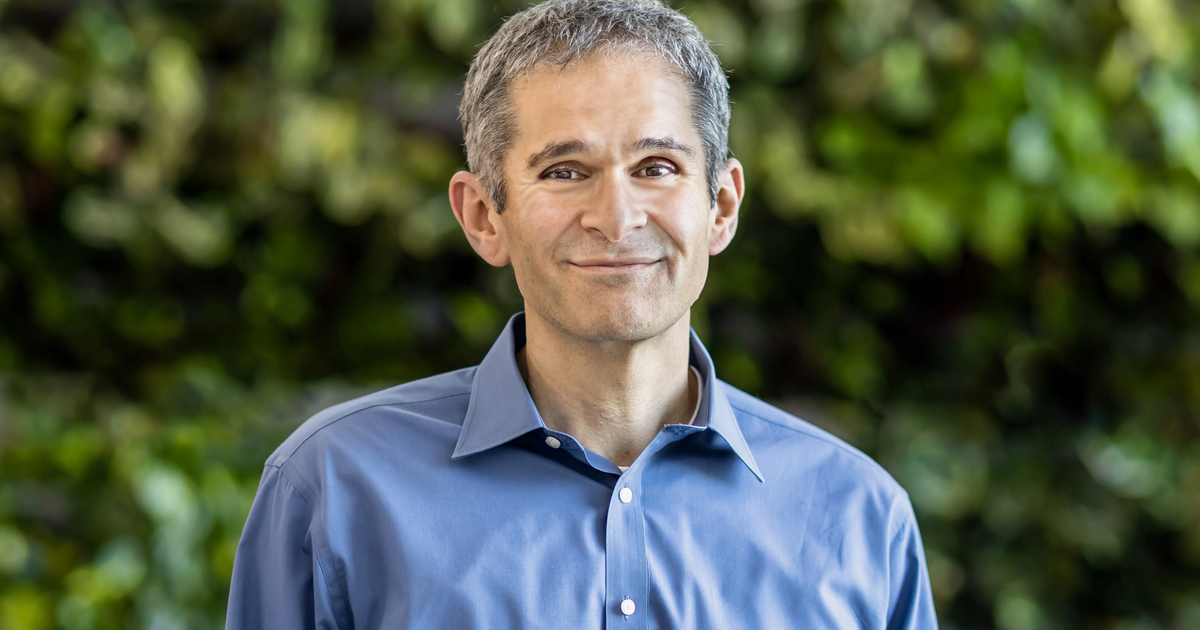全部新闻

埃隆·马斯克 (Elon Musk) 称人工智能为“有史以来最激烈的 ELO 之战”,加文·贝克 (Gavin Baker) 警告 Nvidia Blackwell 芯片可能会破坏谷歌的成本优势
2025-12-11 03:31:00
在投资者 Gavin Baker 就 Nvidia 的下一代 Blackwell 芯片可能重塑 AI 行业经济发表评论后,埃隆·马斯克 (Elon Musk) 在播客采访中警告称,一场全面的 AI 硬件战争即将到来。马斯克强调硬件部署速度对于在高风险的人工智能竞争中获胜至关重要,尤其是在机器人领域。贝克强调了向 Blackwell 的复杂过渡,并指出谷歌由于人工智能代币生产成本较低而具有短期竞争优势。他预测,在 Blackwell 芯片上训练的主要人工智能模型最早可能会在 2026 年出现,而马斯克的 xAI 可能会引领这一潮流。
在投资者 Gavin Baker 就 Nvidia 的下一代 Blackwell 芯片可能重塑 AI 行业经济发表评论后,埃隆·马斯克 (Elon Musk) 在播客采访中警告称,一场全面的 AI 硬件战争即将到来。马斯克强调硬件部署速度对于在高风险的人工智能竞争中获胜至关重要,尤其是在机器人领域。贝克强调了向 Blackwell 的复杂过渡,并指出谷歌由于人工智能代币生产成本较低而具有短期竞争优势。他预测,在 Blackwell 芯片上训练的主要人工智能模型最早可能会在 2026 年出现,而马斯克的 xAI 可能会引领这一潮流。

AI:微软、亚马逊下了大赌注,但印度在全球竞争中处于什么位置?
2025-12-11 02:46:08
印度正在吸引亚马逊和微软等科技巨头的大量投资,以增强其人工智能能力,一些专家将其视为对潜在全球人工智能泡沫破裂的对冲。尽管印度在人工智能人才和开发者活动方面排名靠前,但在主权人工智能模型开发、基础设施和留住熟练专业人员方面仍然面临挑战。尽管存在这些障碍,印度对全球人工智能格局的影响还是显着的,特别是因为其人工智能技术在下游的强大应用,可以刺激创业并解决数百万人的现实问题。
印度正在吸引亚马逊和微软等科技巨头的大量投资,以增强其人工智能能力,一些专家将其视为对潜在全球人工智能泡沫破裂的对冲。尽管印度在人工智能人才和开发者活动方面排名靠前,但在主权人工智能模型开发、基础设施和留住熟练专业人员方面仍然面临挑战。尽管存在这些障碍,印度对全球人工智能格局的影响还是显着的,特别是因为其人工智能技术在下游的强大应用,可以刺激创业并解决数百万人的现实问题。
我们与英国政府的合作伙伴关系
2025-12-11 00:44:23
英国和谷歌 DeepMind 正在深化合作,利用人工智能促进科学发现、加强教育、公共服务现代化和国家安全。主要举措包括提供科学和教育领域先进的人工智能模型,在英国建立第一个专注于材料科学的自动化人工智能实验室,以及开展研究以了解人工智能如何减少教师的工作量并增强学生的学习。此外,我们正在努力使用 CodeMender 等人工智能工具来提高网络弹性。此次合作旨在制定将人工智能创新转化为公共利益的全球标准。
英国和谷歌 DeepMind 正在深化合作,利用人工智能促进科学发现、加强教育、公共服务现代化和国家安全。主要举措包括提供科学和教育领域先进的人工智能模型,在英国建立第一个专注于材料科学的自动化人工智能实验室,以及开展研究以了解人工智能如何减少教师的工作量并增强学生的学习。此外,我们正在努力使用 CodeMender 等人工智能工具来提高网络弹性。此次合作旨在制定将人工智能创新转化为公共利益的全球标准。

州总检察长警告微软、OpenAI、谷歌和其他人工智能巨头修复“妄想”输出 |TechCrunch
2025-12-11 00:13:43
一组美国州总检察长向微软、OpenAI 和谷歌等领先的人工智能公司发出了一封信,敦促他们对聊天机器人中的“妄想输出”实施保护措施,否则将面临法律后果。这封信要求在公开发布之前进行第三方审核、事件报告程序和安全测试。它强调了过度使用人工智能对弱势群体的潜在危害,并将心理健康事件的处理与网络安全漏洞进行了比较。此举是在州政府和联邦政府之间就人工智能法规产生监管争议之际发生的。
一组美国州总检察长向微软、OpenAI 和谷歌等领先的人工智能公司发出了一封信,敦促他们对聊天机器人中的“妄想输出”实施保护措施,否则将面临法律后果。这封信要求在公开发布之前进行第三方审核、事件报告程序和安全测试。它强调了过度使用人工智能对弱势群体的潜在危害,并将心理健康事件的处理与网络安全漏洞进行了比较。此举是在州政府和联邦政府之间就人工智能法规产生监管争议之际发生的。

除非特朗普采取行动,否则民主党人将用唤醒规则扼杀人工智能
2025-12-11 00:09:00
特朗普总统计划签署一项行政命令,建立统一的联邦方法,称为“一个规则手册”,用于监管人工智能。此举旨在防止各州监管格局分散,并避免欧洲式的复杂化。该倡议旨在保护美国的国家安全和相对于中国的经济竞争力,这与拜登总统此前旨在联邦政府对人工智能发展进行严格控制的提议形成鲜明对比。
特朗普总统计划签署一项行政命令,建立统一的联邦方法,称为“一个规则手册”,用于监管人工智能。此举旨在防止各州监管格局分散,并避免欧洲式的复杂化。该倡议旨在保护美国的国家安全和相对于中国的经济竞争力,这与拜登总统此前旨在联邦政府对人工智能发展进行严格控制的提议形成鲜明对比。

客户挑战
2025-12-11 00:01:09
网站组件加载失败,可能是由于浏览器扩展、网络问题或浏览器设置造成的。检查连接并禁用广告拦截器;考虑尝试不同的浏览器。
网站组件加载失败,可能是由于浏览器扩展、网络问题或浏览器设置造成的。检查连接并禁用广告拦截器;考虑尝试不同的浏览器。

唐纳德·特朗普提醒全世界他不知道 6G 意味着什么
2025-12-10 23:37:26
唐纳德·特朗普总统在电视直播中表现出对技术术语的困惑,错误地将“6G”等同于高分辨率成像功能,而不是下一代蜂窝网络。这件事发生在高通CEO克里斯蒂亚诺·阿蒙面前,他并没有纠正。这次交流凸显了特朗普对技术进步的误解,鉴于这次最新的失态,他过去关于 5G 开发领导力的主张受到质疑。
唐纳德·特朗普总统在电视直播中表现出对技术术语的困惑,错误地将“6G”等同于高分辨率成像功能,而不是下一代蜂窝网络。这件事发生在高通CEO克里斯蒂亚诺·阿蒙面前,他并没有纠正。这次交流凸显了特朗普对技术进步的误解,鉴于这次最新的失态,他过去关于 5G 开发领导力的主张受到质疑。

独家:谷歌任命新任人工智能基础设施建设负责人
2025-12-10 21:15:00
谷歌任命 Amin Vahdat 为人工智能基础设施首席技术专家,让他成为直接向首席执行官 Sundar Pichai 汇报工作的 15-20 名人员之一。此举凸显了谷歌对人工智能基础设施的关注,这是当前科技竞赛的一个关键领域。到 2025 年底,预计资本支出将达到 900 亿美元,其中大部分将用于 Vahdat 的新领域,其中包括定制 AI 芯片和相关技术堆栈,这些技术堆栈对于向用户高效交付 AI 产品至关重要。Vahdat 的领导力在数据中心运营转型和网络效率优化方面发挥了关键作用,而这也是谷歌在人工智能竞赛中保持竞争优势的关键因素。
谷歌任命 Amin Vahdat 为人工智能基础设施首席技术专家,让他成为直接向首席执行官 Sundar Pichai 汇报工作的 15-20 名人员之一。此举凸显了谷歌对人工智能基础设施的关注,这是当前科技竞赛的一个关键领域。到 2025 年底,预计资本支出将达到 900 亿美元,其中大部分将用于 Vahdat 的新领域,其中包括定制 AI 芯片和相关技术堆栈,这些技术堆栈对于向用户高效交付 AI 产品至关重要。Vahdat 的领导力在数据中心运营转型和网络效率优化方面发挥了关键作用,而这也是谷歌在人工智能竞赛中保持竞争优势的关键因素。

人工智能经济中正在发生一些不祥的事情
2025-12-10 18:13:00
CoreWeave这家鲜为人知的公司在2023年却表现出色,其IPO规模为2021年以来最大规模,股价大幅上涨。CoreWeave 的商业模式涉及收购高端计算机芯片并将其出租给人工智能公司,与 Nvidia、Meta 和 OpenAI 等科技巨头形成复杂的财务关系。这些合作伙伴关系涉及大量债务和循环融资,如果人工智能繁荣未能按预期实现,就会引发类似于 2008 年金融危机之前的担忧。该行业的极端金融化反映了人工智能基础设施的高昂成本,需要创造性的融资措施,这可能会给更广泛的经济带来风险。一个
CoreWeave这家鲜为人知的公司在2023年却表现出色,其IPO规模为2021年以来最大规模,股价大幅上涨。CoreWeave 的商业模式涉及收购高端计算机芯片并将其出租给人工智能公司,与 Nvidia、Meta 和 OpenAI 等科技巨头形成复杂的财务关系。这些合作伙伴关系涉及大量债务和循环融资,如果人工智能繁荣未能按预期实现,就会引发类似于 2008 年金融危机之前的担忧。该行业的极端金融化反映了人工智能基础设施的高昂成本,需要创造性的融资措施,这可能会给更广泛的经济带来风险。一个

谷歌首席执行官表示,随着人工智能将社会推向木材削片机,我们都将不得不经历它
2025-12-10 16:12:37
美国的求职者正在经历“低雇佣经济”,工资增长停滞,福利恶化。与此同时,尽管现实世界的效率提升放缓,但对人工智能的投资仍在蓬勃发展。桑达尔·皮查伊 (Sundar Pichai) 等科技领袖警告称,人工智能会对社会造成重大破坏,而经济学家则表示,影响可能需要几十年才能显现。争论的焦点是人工智能将在多大程度上实现工作自动化,而不是增强工作机会,并担心科技公司如何阐述人工智能对就业的影响。
美国的求职者正在经历“低雇佣经济”,工资增长停滞,福利恶化。与此同时,尽管现实世界的效率提升放缓,但对人工智能的投资仍在蓬勃发展。桑达尔·皮查伊 (Sundar Pichai) 等科技领袖警告称,人工智能会对社会造成重大破坏,而经济学家则表示,影响可能需要几十年才能显现。争论的焦点是人工智能将在多大程度上实现工作自动化,而不是增强工作机会,并担心科技公司如何阐述人工智能对就业的影响。